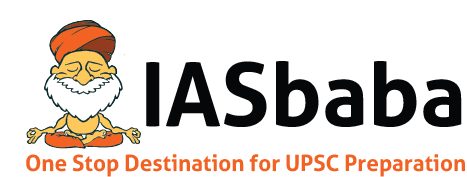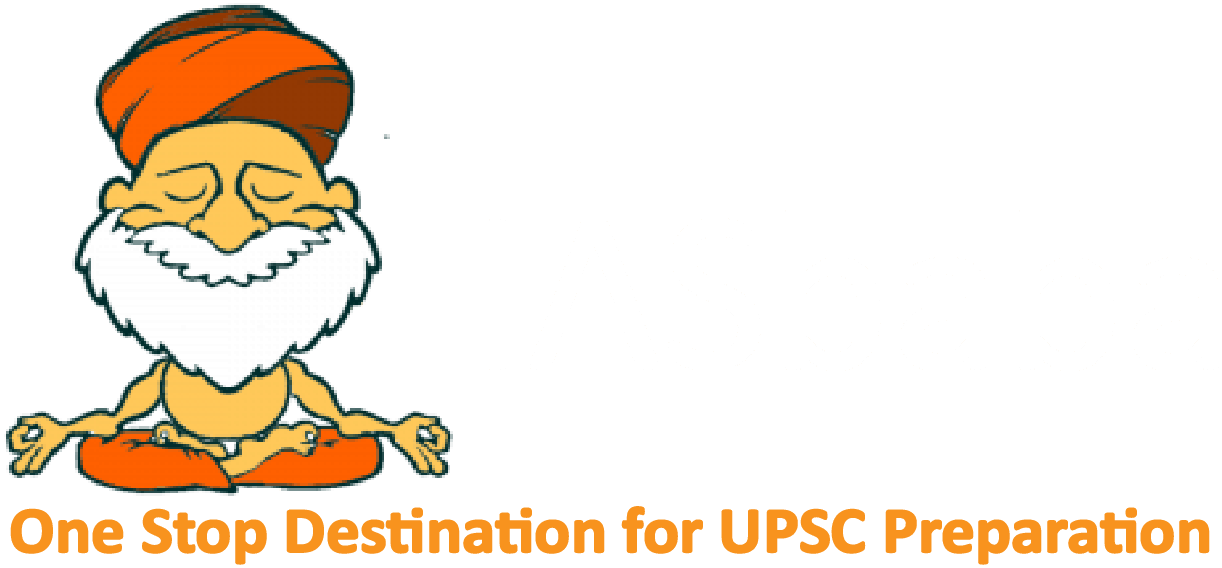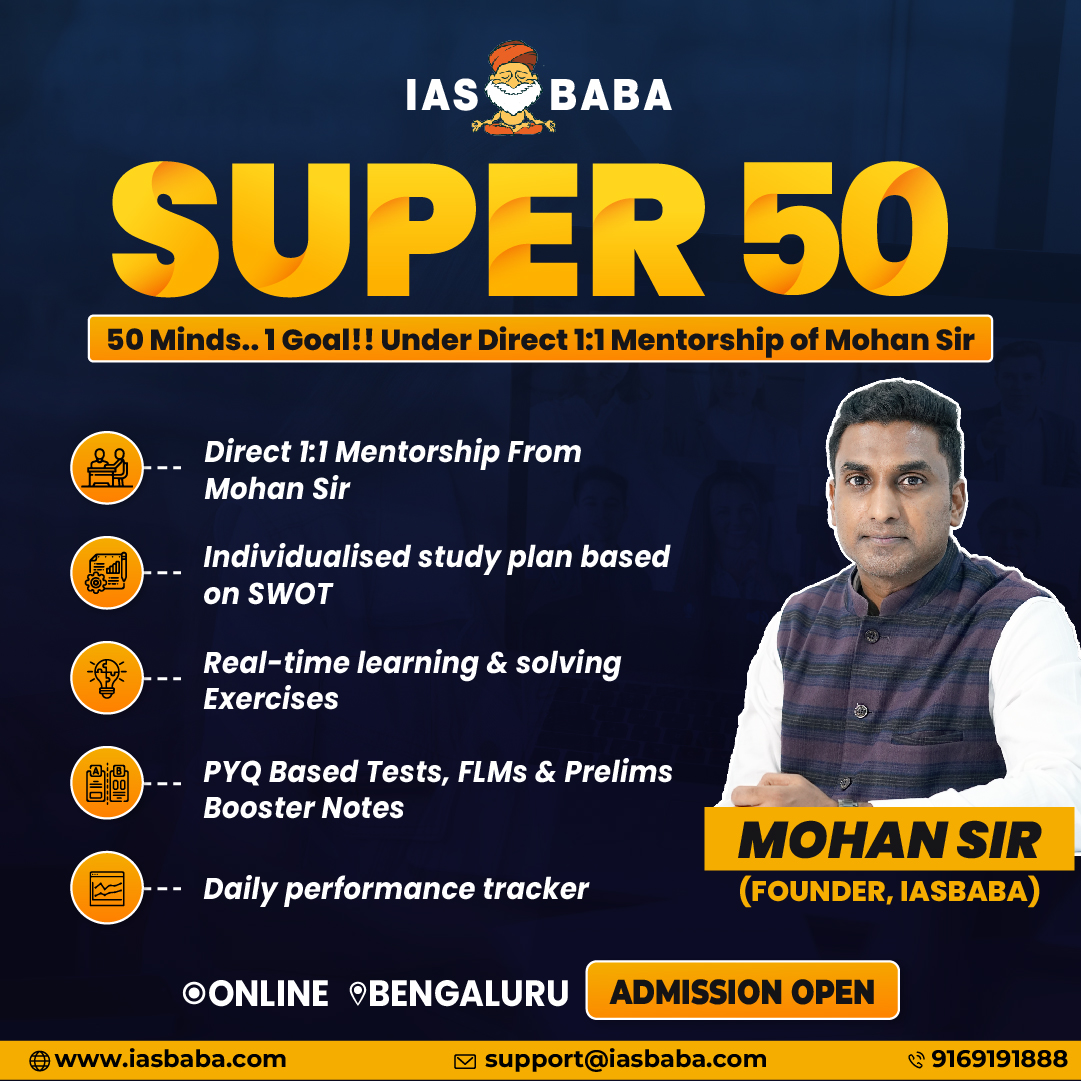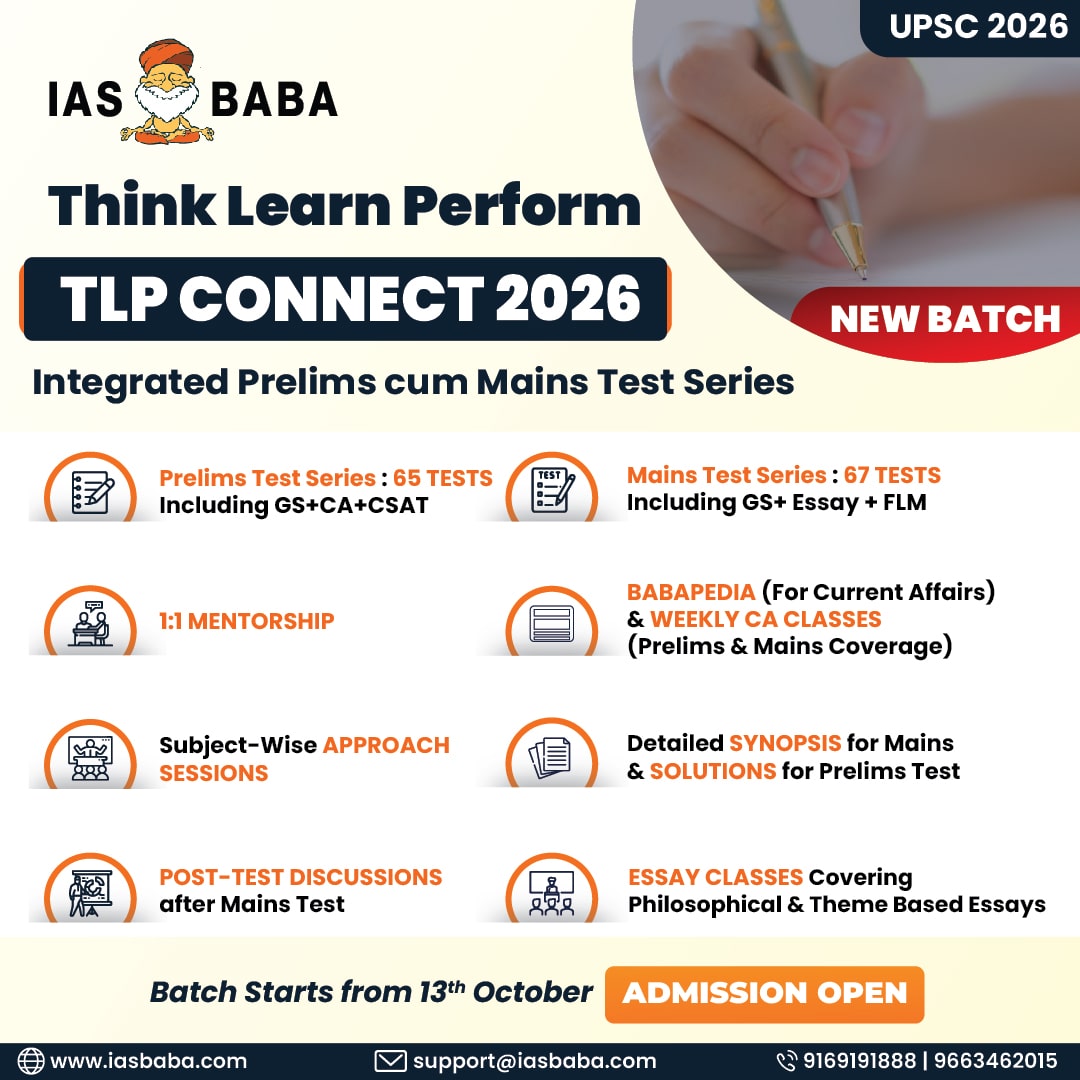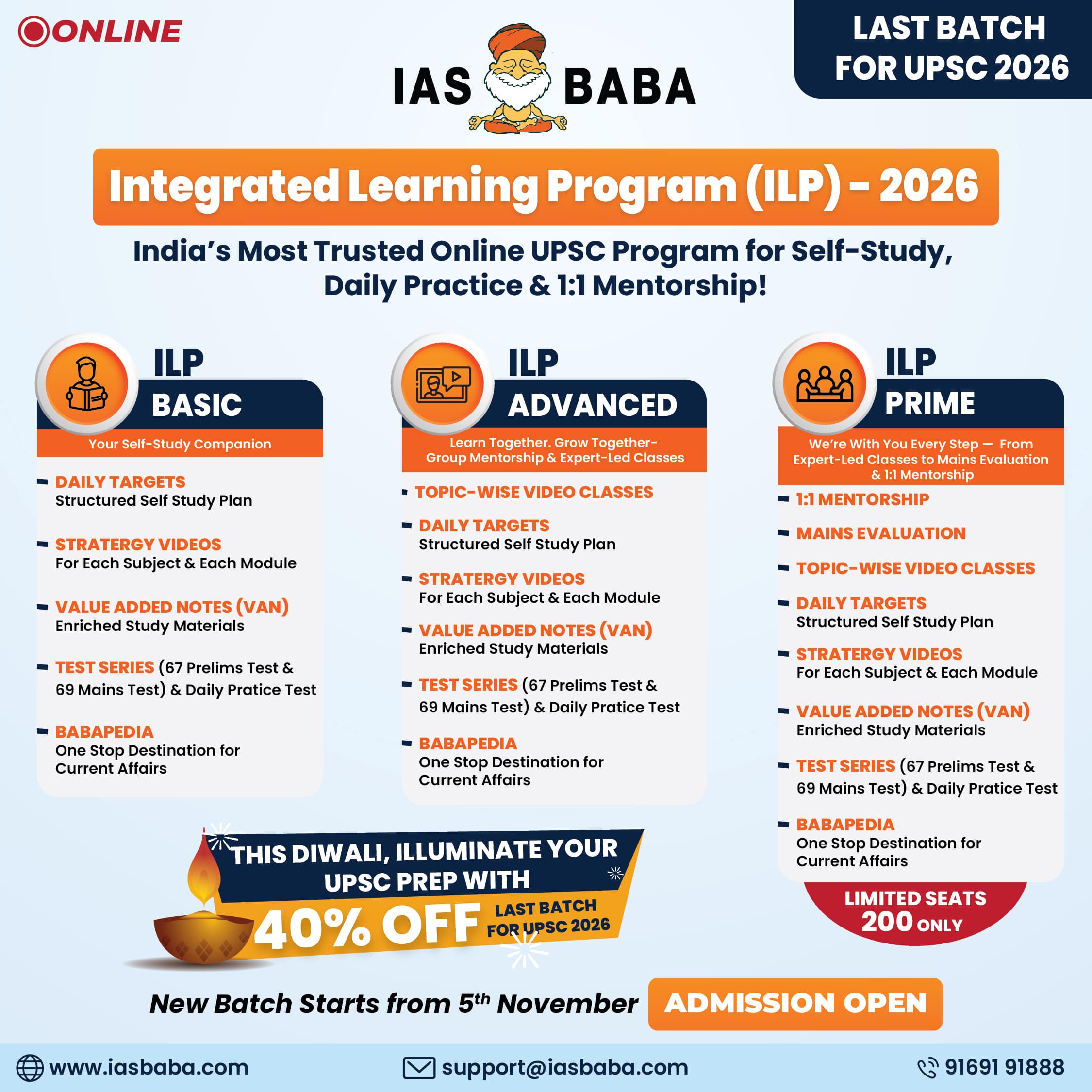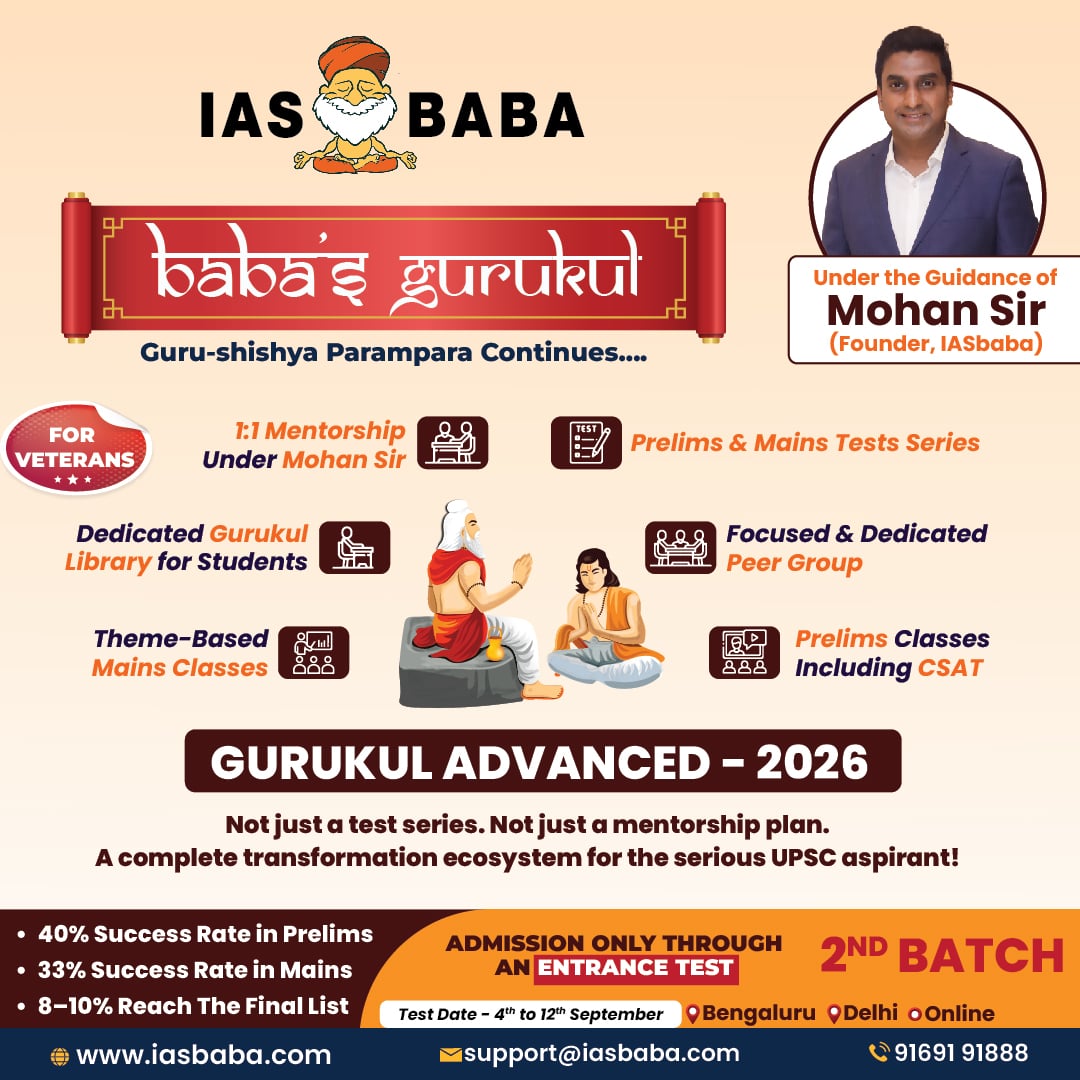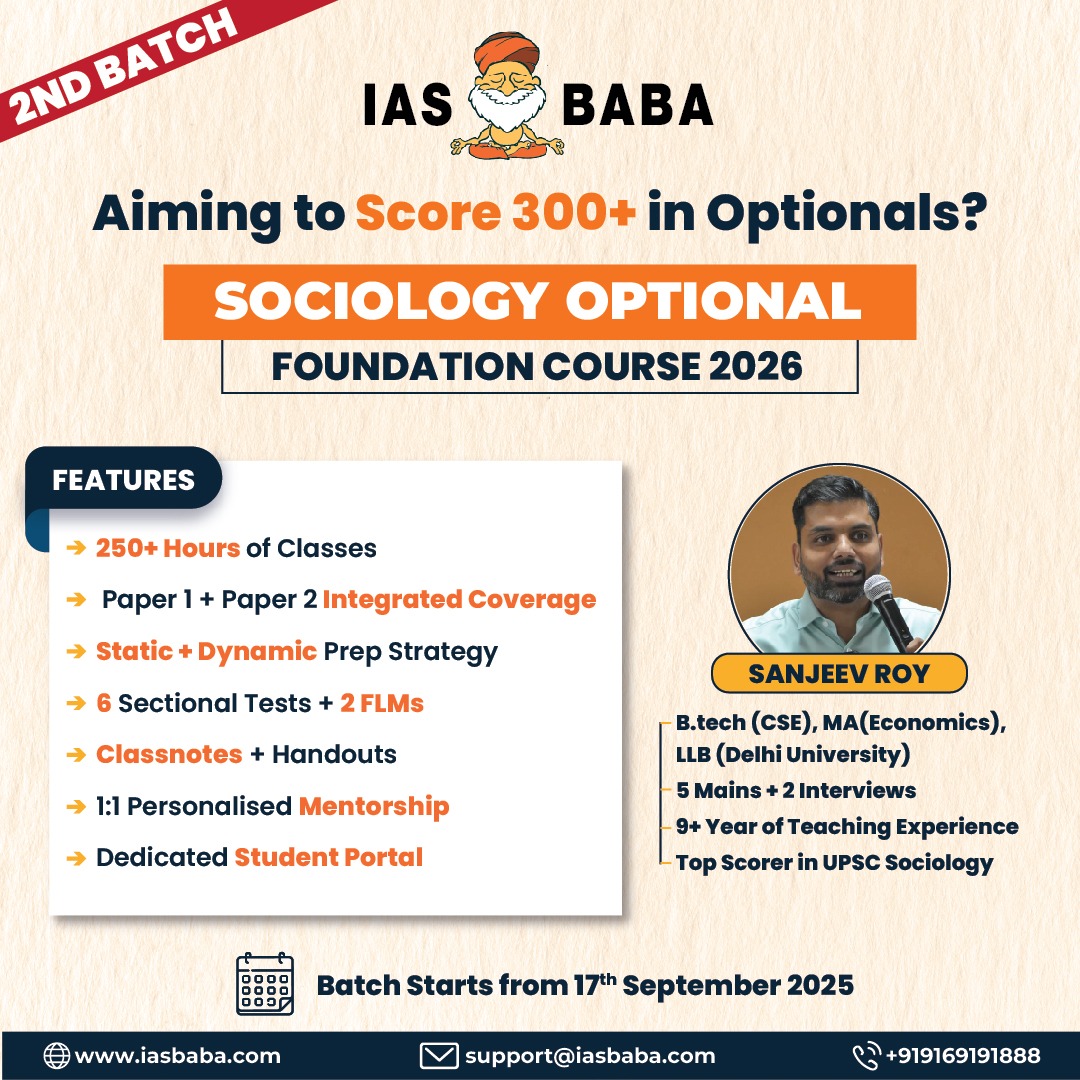IASbaba's Daily Current Affairs Analysis
rchives
(PRELIMS Focus)
Category: POLITY
Context: Chief Justice of India B.R. Gavai clarified in open court that he believes in true secularism, respects all religions, and often visits places of worship of different faiths.
The controversy stemmed from remarks on a petition to reconstruct a Lord Vishnu idol in the Khajuraho monuments, which were misinterpreted on social media. He criticized how platforms distort and inflame events, drawing parallels to incidents in Nepal, while senior advocates also warned about the dangers of social media reactions to judicial statements.
Learning Corner:
Indian Secularism vs Western Secularism
Indian Secularism
- The Indian model is based on the principle of Sarva Dharma Sambhava (equal respect for all religions).
- The State maintains a principled distance — it does not have an official religion but can intervene in religious practices to ensure equality, social reform, and protection of fundamental rights (e.g., banning untouchability, reforming temple entry).
- It emphasizes positive secularism, meaning the State actively engages with religions to uphold harmony and justice.
Western Secularism
- Rooted in the historical context of Church–State conflicts in Europe.
- The State maintains strict separation of religion and politics — religion is seen as a private matter (e.g., U.S. First Amendment principle of “wall of separation”).
- It emphasizes negative secularism, where the State avoids interference in religious matters, ensuring neutrality and individual freedom.
Source: THE HINDU
Category: SCIENCE AND TECHNOLOGY
Context : Scientists have discovered that the Mediterranean harvester ant, Messor ibericus, can give birth to two different species—its own and pure males of Messor structor
Researchers found that all worker ants were genetic hybrids of both species, and about 10% of the queen’s eggs developed into pure M. structor males.
This process, termed xenoparity, is the first known case of an animal naturally producing offspring of another species. It challenges conventional ideas of reproduction and species boundaries. Genetic studies show that M. ibericus and M. structor diverged over five million years ago, yet this adaptation helps their colonies survive by sustaining both species and ensuring a hybrid workforce.
Learning Corner:
Xenoparity
- Meaning: Xenoparity refers to the phenomenon where an organism gives birth to offspring of a different species.
- Discovery: First documented in the Mediterranean harvester ant Messor ibericus, which can produce not only its own offspring but also pure males of another species, Messor structor.
- Mechanism:
- Queens produce their own species’ queens using sperm from M. ibericus males.
- They produce hybrid workers and even pure M. structor males using sperm from M. structor males.
- Significance:
- First known natural case in animals challenging the biological rule that offspring belong to the same species as the parent.
- Redefines concepts of reproduction, heredity, and species boundaries.
- Evolutionary Context: Despite diverging over 5 million years ago, M. ibericus and M. structor maintain this rare reproductive adaptation, enhancing colony survival.
Source: THE INDIAN EXPRESS
Category: POLITY
Context: Union Minister of Development of North Eastern Region, Jyotiraditya M. Scindia, virtually interacted with students from the North East who visited ISRO headquarters under the NE-SPARKS programme.
The initiative aims to nurture scientific curiosity among youth from all eight North Eastern states by exposing them to India’s space technology. Nearly 400 meritorious students in four batches have participated so far, with the Minister encouraging them to pursue careers in STEM and highlighting the government’s commitment to empowering the region’s youth.
Learning Corner:
NE-SPARKS Programme – Brief Note
- Full form: North East Students’ Programme for Awareness, Reach, and Knowledge on Space.
- Launched by: Ministry of Development of North Eastern Region (DoNER) in collaboration with ISRO.
- Objective: To nurture scientific curiosity and inspire youth from all eight North Eastern states by giving them exposure to India’s space research and technology.
- Features:
- Meritorious students from the region visit ISRO facilities.
- Hands-on exposure to cutting-edge space science, satellite technology, and research activities.
- Interaction with scientists to encourage STEM career choices.
- Progress: Nearly 400 students across four batches have already participated.
- Significance: Enhances scientific temperament, bridges regional gaps in science education, and empowers the North Eastern youth by connecting them directly with national scientific institutions.
Source: PIB
Category: POLITY
Context : Revised EVM Ballot Paper Guidelines by Election Commission.
- Candidate photographs: Printed in colour, with the face covering three-fourths of the space.
- Names & NOTA: Displayed in uniform font type, bold size 30 for better readability.
- Serial numbers: Shown in the international form of Indian numerals.
- Ballot paper quality: Printed on 70 GSM high-quality pink paper with specified RGB values (for Assembly elections).
- Candidate limit per sheet: Maximum 15 candidates, with NOTA placed after the last candidate.
- Implementation: First applied in the upcoming Bihar Assembly elections.
- Part of reforms: Among 28 reforms introduced in the past six months to enhance clarity, accessibility, and modernization.
Learning Corner:
History of Electronic Voting Machines (EVMs) in India
- Introduction:
- The idea of using EVMs was proposed by the Election Commission of India (ECI) in the late 1970s to make the voting process faster, transparent, and less prone to malpractices.
- First Prototype:
- Developed by Electronics Corporation of India Limited (ECIL), Hyderabad in 1977.
- Later, Bharat Electronics Limited (BEL), Bengaluru also joined in manufacturing.
- First Use:
- EVMs were experimentally used in 50 polling stations of Parur constituency in Kerala in 1982 Assembly elections.
- However, the Supreme Court struck this down as there was no legal provision for EVM use in the Representation of the People Act, 1951.
- Legal Backing:
- The law was amended in 1989 to allow use of EVMs in elections.
- Gradual Adoption:
- Pilot use in 1998 (Rajasthan, Madhya Pradesh, Delhi, etc.).
- Widespread use in 2001 Tamil Nadu Assembly elections.
- By the 2004 General Elections, EVMs were used in all Lok Sabha constituencies for the first time.
- Later Developments:
- VVPAT (Voter Verifiable Paper Audit Trail) introduced in 2013 (Nagaland by-election).
- From 2019 Lok Sabha elections, EVMs with VVPATs were used in all polling stations across India.
Source: PIB
Category: POLITY
Context: PM Modi Lays Foundation of PM MITRA Park, Promotes Swadeshi.
- Swadeshi Push: Urged citizens to buy only Indian-made products and traders to sell indigenously manufactured goods, framing it as key to building a developed India by 2047. Campaigns and shop signage for Swadeshi goods are planned, coinciding with new GST rates and Navratri.
- PM MITRA Park Network: Dhar park is the first of seven, others in Tamil Nadu, Telangana, Gujarat, Karnataka, Uttar Pradesh, and Maharashtra.
- Objective: Based on the 5F theme — farm → fibre → factory → fashion → foreign — to boost textile manufacturing, exports, and attract private investment (₹23,000 crore proposals from 114 companies for Dhar park).
Learning Corner:
PM MITRA (Prime Minister Mega Integrated Textile Region & Apparel) Parks
Launched by: Ministry of Textiles, Government of India
Objective:
- To create integrated textile manufacturing hubs that boost domestic production, employment, and exports.
- Promote the 5F textile model: Farm → Fibre → Factory → Fashion → Foreign.
- Attract private investment and foster a globally competitive textile industry.
Key Features:
- Modern, plug-and-play industrial infrastructure for textile companies.
- Focus on end-to-end value chain integration: raw material sourcing, spinning, weaving, apparel production, and exports.
- Encourages “Swadeshi” or indigenous manufacturing and local employment.
- Promotes exports of textiles and apparel by increasing competitiveness and scale.
Current Sites (7 Approved Parks):
- Dhar, Madhya Pradesh (first laid foundation)
- Virudhnagar, Tamil Nadu
- Warangal, Telangana
- Navasari, Gujarat
- Kalaburagi, Karnataka
- Lucknow, Uttar Pradesh
- Amravati, Maharashtra
Investment & Impact:
- Dhar park has proposals worth ₹23,000 crore from 114 textile companies.
- Expected to generate employment and strengthen India’s textile export capacity.
Significance:
- Strengthens domestic textile industry under the “Make in India” and Swadeshi initiatives.
- Helps integrate traditional textile clusters into global value chains.
Source: THE HINDU
(MAINS Focus)
Introduction (Context)
The World Bank (2025) highlighted that extreme poverty has nearly disappeared in India, with poverty falling from 16.2% in 2011–12 to 2.3% in 2022–23.
However, alternative food-based metrics, such as the “thali index”, show a very different picture of food deprivation.
What is Thali Index?
- Traditional poverty measurement in India is based on calorie intake as a benchmark for minimum income required. This physiological approach does not capture the full dimension of food adequacy.
- Alternative approaches consider quality of consumption energy, nourishment, and satisfaction derived from food.
- The thali meal reflects this broader perspective, making it a suitable metric for measuring food consumption. (A thali, combining carbohydrates, proteins, and vitamins, represents a balanced and self-contained unit of food intake in South Asia.)
- The thali index captures real nutritional adequacy beyond just calorie counts.
Key Findings from the Thali Index
- The cost of a home-cooked thali has been estimated by Crisil at approximately ₹30, which serves as a benchmark to measure affordability of a basic, balanced meal.
- Using the findings of the 2024 Household Consumption Expenditure Survey it was observed that:
-
- nearly 50% of rural households
- around 20% of urban households did not have the financial capacity to afford two thalis per person per day.
- This situation highlights a level of food deprivation far greater than what is reflected in conventional poverty statistics, such as those provided by the World Bank, which focus mainly on income levels.
- The analysis further accounted for the imputed value of food supplied through the Public Distribution System (PDS), including both purchased and free supplies.
- Even after incorporating the benefits of the PDS, the estimates reveal that food deprivation persists significantly, with around 40% of rural households and 10% of urban households still unable to afford the minimum standard of two thalis per day.
These findings underscore that while official poverty rates may suggest progress, nutritional deprivation continues to affect a large section of the population, particularly in rural India.
Why data differs from that of World Bank
- The findings differ because it does not assume that families can spend all their income on food.
- A large part of their earnings goes to essentials like rent, transport, phone bills, healthcare, and education.
- Whatever is left is spent on food, making it a residual expense.
- Hence, thali index are based on actual food expenditure, not total income.
Role of PDS in alleviating food deprivation
- The Public Distribution System (PDS) has been central to India’s food security efforts by supplying essential grains such as rice and wheat at subsidised prices.
- Evidence suggests that the PDS has managed to narrow the gap in cereal intake between rich and poor households, with even the lowest income groups consuming amounts close to those of the better-off.
Data:
- Despite this achievement, the way subsidies are distributed highlights clear imbalances.
- In rural areas, households in the higher expenditure brackets (90–95%) receive nearly the same level of subsidy as those at the very bottom (0–5%), even though their overall spending capacity is several times greater.
- This indicates that a large portion of subsidy benefits goes to groups that do not genuinely need them, as they already consume more than the minimum required standard of food (two thalis a day).
- The pattern is slightly different in urban regions, where the PDS operates in a more progressive manner, with the poor benefitting relatively more. Still, nearly four out of five urban residents get subsidised or free cereals, including many who are already food-secure.
- The PDS has helped reduce cereal inequality, but it has become inefficient and overstretched, as resources are spread across all groups instead of being focused on the most vulnerable still facing food deprivation.
Steps for restructuring PDS
- Food subsidies should be better targeted, with more support for the poorest households and less or none for the richest, who do not need them.
- The latest survey shows that cereal consumption is already equal across income groups, meaning rice and wheat are no longer the main problem.
- However, supplying the entire food basket through PDS is neither practical nor affordable for the government.
- A balanced option is to expand PDS coverage of pulses, as they are the main protein source for many Indians but are consumed much less by the poorest compared to the richest.
Improve pulses consumption
- Pulses are a major source of protein for most Indians, but they are expensive and unevenly consumed.
- The poorest 5% of people eat only half the amount of pulses compared to the richest 5%.
- This shows a big gap in nutrition, unlike cereals where consumption is already similar across income groups.
- Expanding the PDS to include more pulses can help reduce this gap, as it will directly support the poorest households with better nutrition.
- To make this possible, subsidies for cereals can be reduced for those already eating enough, and redirected towards providing pulses to those in need.
Way forward
- Cereal entitlements should be reduced to realistic levels as especially for better-off groups.
- Cutting down on excess cereal distribution will also lower storage and stocking costs for the Food Corporation of India.
- PDS should be expanded to include more pulses, which are essential for nutrition and more needed by the poor.
- Subsidies must be removed for those already consuming enough (two thalis a day), so that support reaches those who are truly deprived.
Conclusion
The PDS is currently overstretched, but restructuring it to focus on pulses and the poorest households can improve efficiency, raise nutrition levels, and achieve globally significant equity in food consumption.
Mains Practice Question
Q Critically examine the role of the Public Distribution System (PDS) in addressing food deprivation in India. Can expanding pulses distribution be a viable solution? (250 words, 15 marks)
Introduction (Context)
India has shown progress in its Sustainable Development Goals (SDG) journey, ranking 99 out of 167 nations in the SDG Index 2025, an improvement from 109 in 2024.
India has demonstrated advancement in areas such as access to basic services and infrastructure. Yet, the report also flagged pressing challenges in key sectors, particularly health and nutrition, where progress has been uneven, especially in rural and tribal communities.
What is SDG Index?
The Sustainable Development Goals (SDG) Index is a global tool developed by the Sustainable Development Solutions Network (SDSN) and partners to measure a country’s progress towards the 17 SDGs and 169 targets adopted under the UN 2030 Agenda.
How is it calculated?
- Uses data from international agencies such as the UN, World Bank, WHO, FAO, ILO etc.
- Each SDG is assessed through a set of indicators (e.g., maternal mortality for SDG 3, renewable energy share for SDG 7).
- Indicators are standardised on a scale of 0–100 (0 = worst performance, 100 = target achieved).
- A weighted average of indicators under each goal is taken.
- The overall index score is the average across all 17 SDGs.
What is SDG 3?
- Goal: To ensure universal health coverage, reduce mortality rates, improve life expectancy, and strengthen prevention and treatment of diseases.
- Targets include:
- Reduce Maternal Mortality Ratio (MMR) to below 70 per 100,000 live births.
- Reduce under-five mortality rate to 25 per 1,000 live births.
- Achieve universal immunisation.
- Reduce out-of-pocket (OOP) health expenditure.
- Increase life expectancy.
Data related to SDG – 3
- Maternal Mortality Ratio (MMR) is 97 deaths per 100,000 live births, above the 2030 target of 70.
- Under-five mortality rate is 32 deaths per 1,000 live births, higher than the target of 25, while developed countries average between 2 and 6.
- Life expectancy is 70 years, short of the 2030 target of 73.63 years.
- Out-of-pocket health expenditure is 13% of household consumption, nearly double the target of 7.83%.
- Immunisation coverage is 93.23%, yet below the universal target of 100%.
Reasons for poor data
- Lack of access to quality healthcare due to poor infrastructure and economic constraints
- Poor nutrition, inadequate hygiene, weak sanitation, and unhealthy lifestyle choices
- Cultural practices and stigma around physical and mental health issues
- Limited awareness preventing communities from using even the available healthcare services
Strategy to meet SDG – 3 targets
- Universal Health Insurance
- Health insurance should be made available to all citizens so that medical treatment does not push families into debt.
- Countries with strong insurance systems have reduced catastrophic health-care spending and made healthcare more equitable.
- For India, expanding schemes like Ayushman Bharat and making them more inclusive can ensure that no one is denied treatment due to financial constraints.
- Strong Primary Health Centres and Digital Health
- Primary Health Centres (PHCs) are the first point of care and must be strengthened across rural and urban areas.
- Good PHCs detect diseases early, reduce hospitalisation costs, and improve long-term health outcomes.
- Digital health tools like telemedicine and electronic health records can bridge access gaps in remote areas.
- Successful global examples show how digital platforms improved maternal care and vaccination tracking—India can adapt these lessons.
- Health Education in Schools
- Prevention is cheaper and more effective than cure.
- School-based health education can shape healthy habits early in life.
- Students should learn about nutrition, hygiene, sanitation, reproductive health, road safety, and mental health.
- Early awareness ensures that children grow into adults who make informed health choices.
- Educated girls, when they become mothers, pass on this knowledge to their families, reducing maternal and child mortality.
Examples:
- Finland’s school-based health reforms in the 1970s, which wove lessons on nutrition, hygiene and lifestyle into the curricula, played a central role in reducing cardiovascular disease rates in the decades that followed.
- In Japan, compulsory health education has been linked to improved hygiene practices and longer life expectancy.
A structured and progressive curriculum in India can achieve similar results.
Way Forward
- Policymakers should integrate health education into school curricula.
- Invest in universal health coverage and strengthen primary health care.
- Parents should actively ensure that children learn about physical, mental, and social health.
- Communities should raise concerns with education authorities if health topics are missing.
- Promote awareness about healthy behaviour from a young age to build long-term habits.
Conclusion
India’s improved SDG ranking is encouraging but only 17% of global SDG targets are on track for 2030.
However, educating youth and strengthening healthcare systems are essential for sustainable progress. Focusing on school health education can help achieve SDG 3 and contribute to a healthier, stronger India by 2047.
Mains Practice Question
Q Despite improvements in India’s SDG ranking, health indicators under SDG 3 continue to lag. Discuss the challenges in achieving SDG 3 targets and suggest a roadmap for India to bridge this gap. (250 words, 15 marks)
